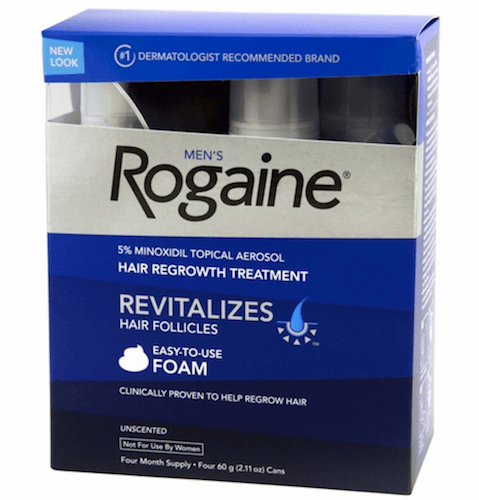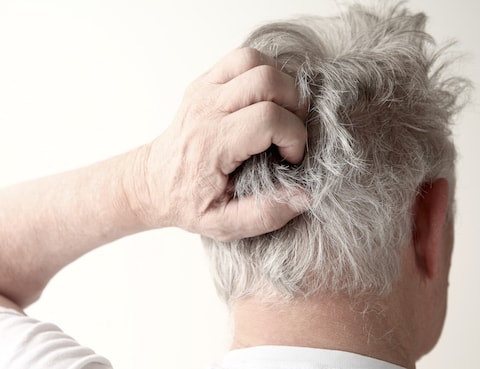Minoxidil (Rogaine) – The Assist To Your Hair Transplant

Minoxidil, also known as Rogaine, is an over-the-counter hair loss topical medication that is used to stimulate hair growth and slow down the balding process. It is well-known for being the first FDA-approved medication for the treatment of hair loss related to androgenetic alopecia (AGA). Minoxidil was originally conceived to treat high blood pressure in patients but it was later found to have an unintended consequence of stimulating hair growth. The topical version of the medication was formulated to be applied to the balding areas of individuals with hair loss. To date, it is one of two FDA-approved medications on the market that is effective in the treatment of hair loss. It has been heralded for its ability to provide measurable hair growth in patients without any significant systemic side effects.
Prevention of Hair Loss
Initial studies with minoxidil were done with the application of the medication to the vertex area of the scalp where it has been known to work the best. However, there is a lingering misconception that this is the only place on the scalp where it works. Contrary to initial beliefs, minoxidil will work anywhere on the scalp there is still some hair (whether it is thinning or miniaturized).
Conversely, one should not expect hair growth related to minoxidil use on locations of the scalp that are devoid of hair follicles. The greatest benefit from the use of minoxidil is expected when it is used early in the course of hair loss and this is usually in the first few years. Beyond this time frame, minoxidil is still effective in slowing down the process but an increase in the hair volume may not be noted. Unfortunately, despite the use of minoxidil, users will still continue to lose hair but at a much slower pace.
Mechanism of Action
Multiple mechanisms of action of Rogaine as it pertains to hair growth have been put forth. The most widely acknowledged effect is the agonistic effect on the potassium channel at the cell membrane level causing the channels to open. The other known mechanism is the widening of blood vessels which, hypothetically, would allow more blood, oxygen and nutrients to reach the follicles. Furthermore, animal studies have shown minoxidil to shorten the telogen state (resting phase) of hair follicles causing premature entry of the hair follicles into the anagen state (growth phase). Minoxidil also causes a prolonged anagen phase and increases the hair length.
What to Expect
- Increased Hair Volume –Your hair doctor can estimate your chances after examining your scalp microscopically. If you plan to start using minoxidil, you must use it twice a day religiously and be committed to it for a minimum of 4-6 months before seeing its effects. You may see an increase in the bulk of your hair after using it past the first few months.
Beyond that, use it for as long as you want to in order to keep the hair that is there because of its use. Should you decide to stop the use of minoxidil, you may notice an increase in hair loss which is referred to as catch-up hair loss.
When viewed with the naked eye, some patients may never notice an obvious increase in their hair bulk. However, with a microscopic evaluation, improvement in hair size can be detected in most patients.
- Shock Loss Prevention –After any emotional, physical or traumatic stress, patients may experience a form of hair loss called shock loss. If you are genetically prone to balding, or have active hair loss, the healing process after a hair transplant is considered a stress to the follicles and may increase hair loss even before you start seeing your newly transplanted hair growing. In order to minimize the shock loss, we recommend patients start Rogaine or prescription medication prescribed by a hair transplant doctor. Since you won’t be able to apply it to newly transplanted grafts for a few days, the best time to start minoxidil to prevent shock loss is a week after a hair transplant. For an optimal outcome, it should be continued for at least 6 months after the procedure.
How to Use Rogaine
Rogaine, or minoxidil, is manufactured in a 2% and 5% concentration. Available in two formulations, both the solution and the foam have their unique advantages and disadvantages. Patients with long hair may find the solution easier to use while patients with extensive balding on the crown and front may find application of the foam more convenient.
Here is how to use Rogaine:
- Before applying Rogaine, dry your hair.
- Apply the prescribed amount to the affected areas of the scalp.
- Rogaine is usually applied twice daily, in the morning and evening, to the balding scalp and not the shafts of the hair. Applying more than twice per day will not increase or hasten hair growth but it may cause severe side effects due to its systemic absorption.
- Avoid getting Rogaine in the eyes, nose or mouth. If this occurs, rinse the area with a copious amount of water. If using styling products or Toppik, apply minoxidil first and then allow it to dry before proceeding with other products. Lastly, wash your hands after applying Rogaine.
Women and Minoxidil
Minoxidil can be used to stimulate hair growth in many women. The approved concentration for women is only 2% of minoxidil instead of the recommended 5% for men. Higher concentrations should only be prescribed by a physician. Studies were performed on mostly white women, ages 18 to 45, with mild to moderate degrees of hair loss. The most serious adverse effects that were reported were hypotension (decrease in blood pressure), and, in rare cases, the appearance of facial hair.
Common Side Effects
Minoxidil is used topically and there is very minimal systemic absorption. However, patients may have adverse effects with its use. Here are the most common side effects of minoxidil:

- Scalp Irritation –The scalp may become overly dry and flaky as well as itchy. The dryness is related to the propylene glycol content in the solution. Consider switching to Rogaine foam if the dryness persists. Your physician could prescribe a light topical steroid which may help with itching. Avoid using topical steroids for greater than 14 consecutive days unless otherwise directed by your physician.
- Temporary Shedding –Topical minoxidil has been known to cause a temporary initial shedding which is concerning to users if they are not warned of this phenomenon up front. Should this occur during the first 2 months of minoxidil use, it is considered a positive sign that the medication is working. Shedding of the hair implies the follicles are reacting to the medication through a revitalizing process
in which old hairs are pushed out/lost followed by regrowth of new stronger hair. - Allergic Reaction –Minoxidil is the active ingredient in Rogaine that may cause allergic reactions in some patients. However, inactive ingredients such as alcohol and propylene glycol are contained in the solution/foam as well. Patients having allergies to these ingredients should also avoid Rogaine.
- Low Blood Pressure –In rare cases when an individual takes more than the directed amount, or applies minoxidil on a large surface area of the scalp, low blood pressure may result from its use. Low blood pressure may indirectly cause fatigue and a low energy level. In such cases, patients need to discontinue minoxidil and discuss this with a hair restoration physician. A dosage adjustment may be all that is needed.
- Hypertrichosis –Increased hair growth due to minoxidil use in women may occur in unintended places such as the face. Hair growth that is out of the ordinary may occur in close proximity to the area of minoxidil application. In addition to this local effect, growth can be seen anywhere on the body due to the systemic absorption of the medication.
Rare Side Effects
These side effects are usually temporary and cease to exist with the discontinuation of minoxidil:
- Dizziness, rapid heartbeat and chest pain have all been reported as possible side effects. These side effects are related to the strong vasodilatory effect of minoxidil. If these events occur, patients must stop using minoxidil and contact their physician.
- Localized acne occurs when irritation and dryness of the skin causes increased oil production. If it occurs, acne will only happen at the site of minoxidil application.
Contraindications
Topical minoxidil has been assigned to pregnancy category C by the FDA which means females should avoid its use and this is especially true during pregnancy. Only a small amount is absorbed systemically and is unlikely to cause adverse effects. However, women are still cautioned against applying the medication while breast feeding as the drug may be passed to the baby via the mother’s breast milk.
Have more questions about minoxidil? Find your answers on our Minoxidil FAQ page.